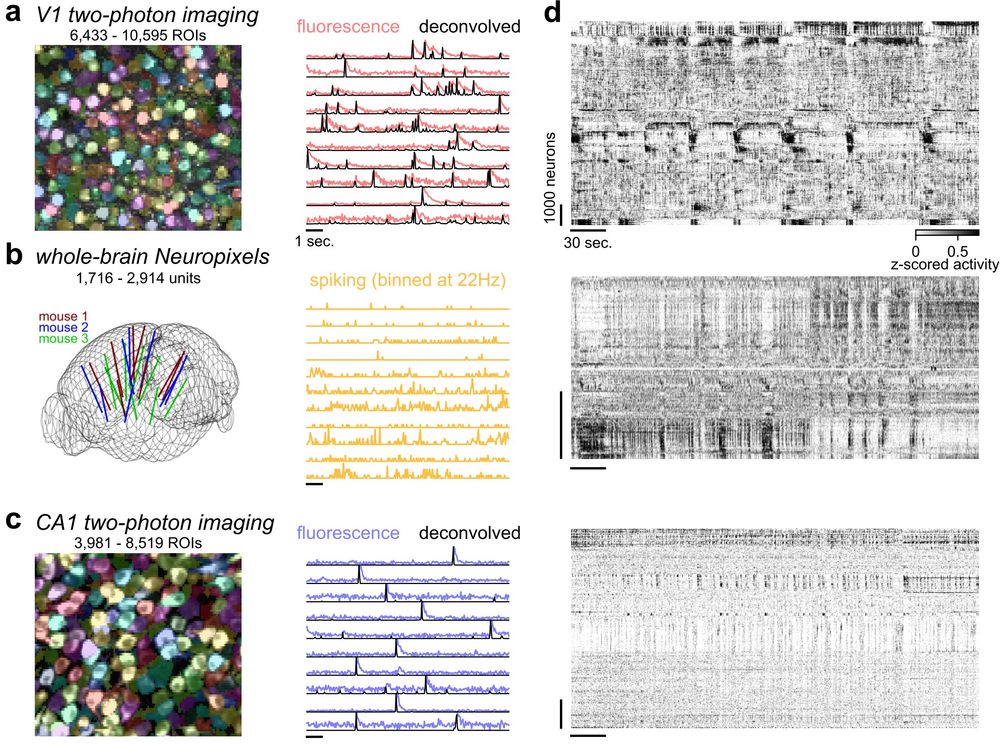


"How does the Geometry of Brain Activity Shape Behavior?"
Valeria Fascianelli; moderator Stefano Fusi, Zuckerman Institute, Columbia.
Open seminars series; register: tinyurl.com/379uda2z
@valeriafascianelli.bsky.social @columbiauniversity.bsky.social @stefanofusi.bsky.social

"How does the Geometry of Brain Activity Shape Behavior?"
Valeria Fascianelli; moderator Stefano Fusi, Zuckerman Institute, Columbia.
Open seminars series; register: tinyurl.com/379uda2z
@valeriafascianelli.bsky.social @columbiauniversity.bsky.social @stefanofusi.bsky.social
"How does the Geometry of Brain Activity Shape Behavior?"
Valeria Fascianelli; moderator Stefano Fusi, Zuckerman Institute, Columbia.
Open seminars series; register here: tinyurl.com/379uda2z
@valeriafascianelli.bsky.social ,
@columbiauniversity.bsky.social, @stefanofusi.bsky.social

Valeria Fascianelli; Project: “The neural geometry of emotions: cognitive implications and individual variability”
tinyurl.com/2y5mzaw9
See all Fellows: tinyurl.com/5afsx4kv
@valeriafascianelli.bsky.social

We’ll be discussing complex systems: from atoms, to people, to machines. @sueyeonchung.bsky.social

We’ll be discussing complex systems: from atoms, to people, to machines. @sueyeonchung.bsky.social
www.biorxiv.org/content/10.1...

www.biorxiv.org/content/10.1...
(We = Aldo Battista 😉)
www.biorxiv.org/content/10.1...

(We = Aldo Battista 😉)
www.biorxiv.org/content/10.1...
w/ Nejatbakhsh, Duong, @sarah-harvey.bsky.social, Brincat, @siegellab.bsky.social, @earlkmiller.bsky.social & @itsneuronal.bsky.social
w/ Nejatbakhsh, Duong, @sarah-harvey.bsky.social, Brincat, @siegellab.bsky.social, @earlkmiller.bsky.social & @itsneuronal.bsky.social


Our new work in Nature answers these questions and more. Thanks to my amazing co-first @fxia.bsky.social @stefanofusi.bsky.social @mazenkheirbek.bsky.social for precious guidance
www.nature.com/articles/s41...
Our new work in Nature answers these questions and more. Thanks to my amazing co-first @fxia.bsky.social @stefanofusi.bsky.social @mazenkheirbek.bsky.social for precious guidance
www.nature.com/articles/s41...
In this paper with Haim Sompolinsky, we simplify and unify derivations for high-dimensional convex learning problems using a bipartite cavity method.
arxiv.org/abs/2412.01110

In this paper with Haim Sompolinsky, we simplify and unify derivations for high-dimensional convex learning problems using a bipartite cavity method.
arxiv.org/abs/2412.01110

